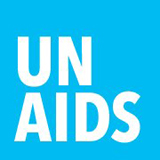
Background
Global surveillance of HIV and sexually transmitted infections is a joint effort of the World Health Organization (WHO) and the Joint United Nations Programme on HIV/AIDS (UNAIDS).
Purpose of the guidance document
This document provides guidance to countries for assessing the utility of data from programmes for prevention of mother-to-child transmission (PMTCT) of human immunodeficiency virus (HIV) for HIV sentinel surveillance (HSS) among pregnant women. The objectives of these guidelines are as follows:
- Describe the context and rationale for transitioning from traditional HSS based on unlinked anonymous testing (UAT) in antenatal clinics (ANCs) to a system of HSS based on routine PMTCT programme data.
- Describe robust methods for assessing the quality of PMTCT programme data for use in HSS.
- Describe general standards for evaluating the readiness of PMTCT programme data to serve as the basis for HSS among pregnant women.
This guidance document is written for national HIV/acquired immunodeficiency syndrome (AIDS) programme managers, surveillance officers and epidemiologists responsible for monitoring HIV trends in low- and middle-income countries.
Related links
Surveillance of the HIV/AIDS epidemic: 2013 comprehensive package
More on HIV surveillance, estimates, monitoring and evaluation
More HIV/AIDS publications